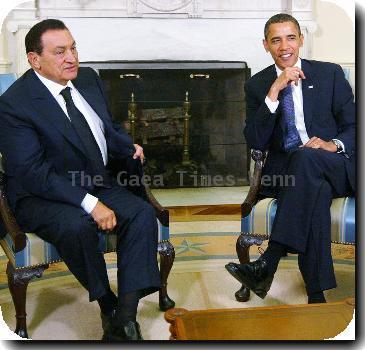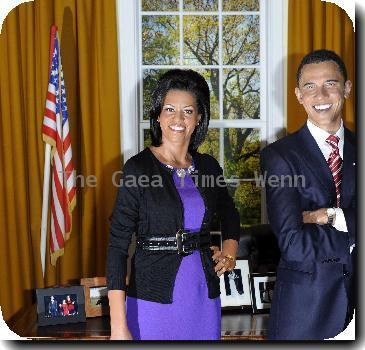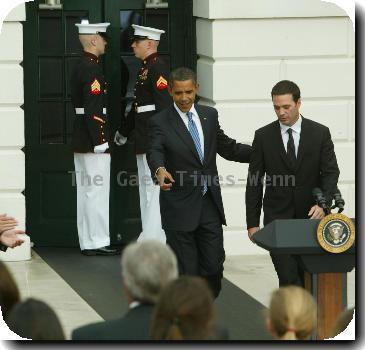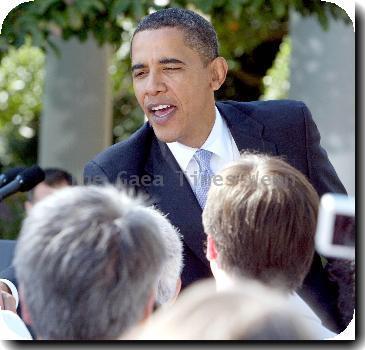US Marines, Afghan soldiers spearheading ground assault reach outer rim of Taliban-held town
By APSaturday, February 13, 2010
Major attack on Taliban stronghold launched
MARJAH, Afghanistan — U.S. Marines and Afghan soldiers stormed the Taliban-held town of Marjah on Saturday, as a major offensive began to break the extremists’ grip over a wide area of their southern heartland and re-establish government control.
Punching their way through a line of insurgent defenses that included mines and homemade bombs, ground forces crossed a major canal into the town’s northern entrance.
Maj. Gen. Nick Carter, NATO commander of forces in southern Afghanistan, said Afghan and coalition troops, aided by 60 helicopters, made a “successful insertion” into Marjah without incurring any casualties.
“The operation went without a single hitch,” Carter said at a briefing in the provincial capital of Lashkar Gah.
Carter said the strike force quickly gained ground as it moved into Marjah and overran disorganized insurgents. “We’ve caught the insurgents on the hoof, and they’re completely dislocated,” he said.
Characterizing Taliban resistance so far as light, Gen. Sher Mohammad Zazai, commander of Afghan troops in the south, said Afghan and NATO forces had established positions in 11 of 13 targeted areas in and around Marjah and were slowly pushing forward through bomb-laden fields.
Five Taliban fighters have been killed and eight arrested since the offensive began overnight, said Helmand provincial spokesman Daoud Ahmadi. He said troops had recovered the bodies of the dead militants.
The long-awaited assault on Marjah is the biggest offensive since the 2001 U.S.-led invasion of Afghanistan and is a major test of a new NATO strategy focused on protecting civilians. The attack is also the first major combat operation since President Barack Obama ordered 30,000 U.S. reinforcements here in December to try to turn the tide of the war.
The troops’ advance into Marjah was slowed during the morning as they carefully picked their way through poppy fields lined with homemade explosives and other land mines. Outbursts of sporadic-but-intense gunfire rang out throughout the morning as insurgents and U.S. forces exchanged fire.
“For now, it’s pretty calm, but we will see on the other side,” said Lt. Carl Quist, commander of 1st Platoon, Lima Company, 3rd Battalion, 6th Marines, during a lull in the ground assault from the northern end of the town.
The ground assault followed many hours after an initial wave of helicopters carrying hundreds of U.S. Marines and Afghan troops swooped into town under the cover of darkness early Saturday. Cobra helicopters fired Hellfire missiles at tunnels, bunkers and other defensive positions.
Marine commanders had said they expected between 400 to 1,000 insurgents — including more than 100 foreign fighters — to be holed up in Marjah. The town of 80,000 people, about 360 miles (610 kilometers) southwest of Kabul, is the biggest southern town under Taliban control and the linchpin of the militants’ logistical and opium-smuggling network.
Sporadic rocket fire from insurgents and the rattle of gunfire echoed in the air. A U.S. missile detonated a massive 55-gallon fuel-drum bomb that sent a mushroom of black smoke dozens of yards (meters) into the sky.
The operation, code-named “Moshtarak,” or “Together,” was described as the biggest joint operation of the Afghan war, with 15,000 troops involved, including some 7,500 troops fighting in Marjah.
To the north, British, American and Canadian forces struck in the Nad Ali district in a push to break Taliban power in Helmand, one of the major battlefields of the war.
In a village north of Marjah, residents said they heard gunfire before dawn, but then it went quiet. Abdul Manan, a farmer in the village of Saipo, said he finally decided to risk going out of his house and saw American troops walking by. They told him to go back inside.
Taliban militants who had been in his village two days earlier disappeared. “I don’t see any Taliban now. I see Americans,” he told The Associated Press by phone.
Once Marjah is secured, NATO hopes to rush in aid and restore public services in a bid to win support among the estimated 125,000 people who live in the town and surrounding villages. The Afghans’ ability to restore those services is crucial to the success of the operation and to prevent the Taliban from returning.
Carter said coalition forces hope to install an Afghan government presence within the next few days and will work to find and neutralize improvised explosive devices — homemade bombs — left by the militants.
Still, the town’s residents have displayed few signs of rushing to welcome the attack force.
“The elders are telling people to stay behind the front doors and keep them bolted,” Carter said. “Once people feel more secure and they realize there is government present on the ground, they will come out and tell us where the IEDs are.”
The overwhelming military edge already seen in the first hours of the offensive will be essential to maintain, Carter said. “Everybody needs to understand that it’s not so much the clear phase that’s decisive. It’s the hold phase.”
Tribal elders have pleaded for NATO to finish the operation quickly and spare civilians — an appeal that offers some hope the townspeople will cooperate with Afghan and international forces once the Taliban are gone.
At the Pentagon, a senior U.S. official said Afghan President Hamid Karzai had signed off on the attack.
Another defense official said Karzai was informed of planning for the operation well in advance. The official said it marked a first in terms of both sharing information prior to the attack and planning collaboration with the Afghan government.
Both officials spoke on condition of anonymity because there were not authorized to speak publicly.
The second official said the number of Afghan security forces in the district have roughly doubled since Obama’s first infusion of some 10,000 Marines in southern Afghanistan last year.
The Marjah offensive involves close combat in extremely difficult terrain, that official said. A close grid of wide canals dug by the United States as an aid project decades ago make the territory a particularly rich agricultural prize, but they complicate the advance of U.S. forces.
On the eve of the attack, cars and trucks jammed the main road out of Marjah as hundreds of civilians defied militant orders and fled the area. For weeks, U.S. commanders had signaled their intention to attack Marjah in hopes that civilians would seek shelter.
Associated Press writers Noor Khan in Kandahar, Christopher Torchia outside Marjah, Amir Shah in Kabul, and Anne Gearan, Stephen Braun and Anne Flaherty in Washington contributed to this report.
Tags: Afghanistan, As-afghanistan, Asia, Barack Obama, Central Asia, Geography, Kabul, Latin America And Caribbean, Lima, Marjah, Municipal Governments, North America, Peru, South America, United States





